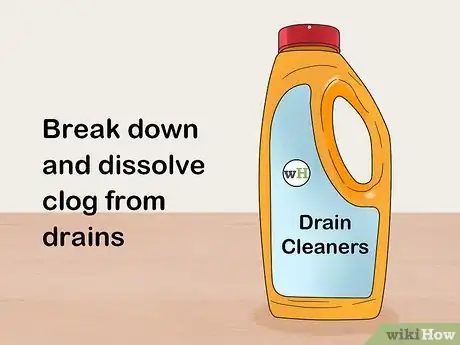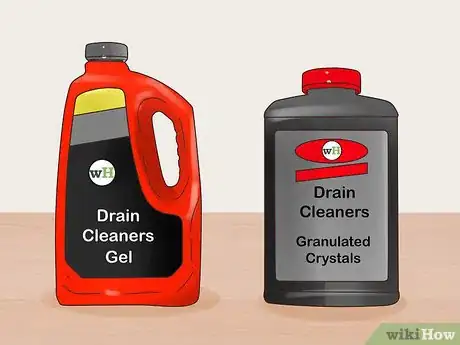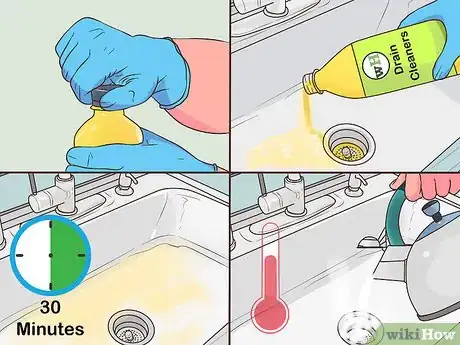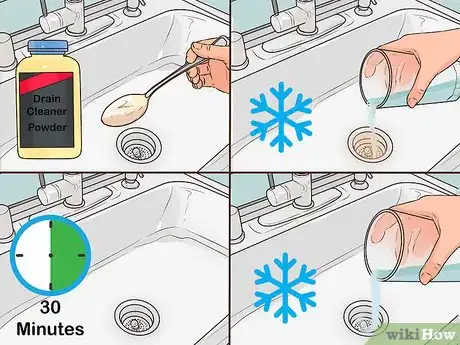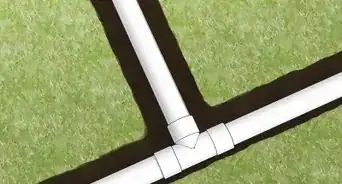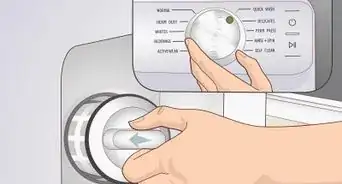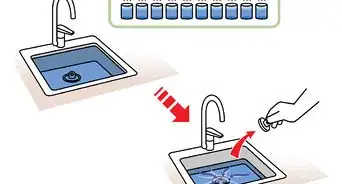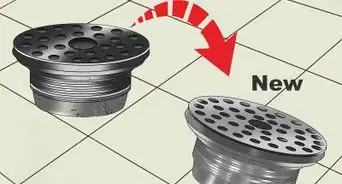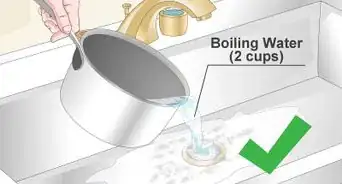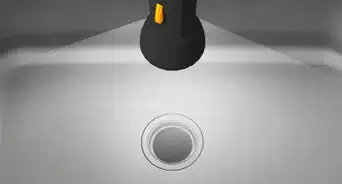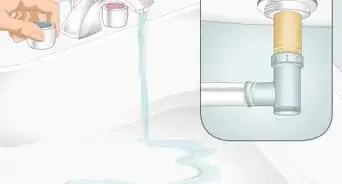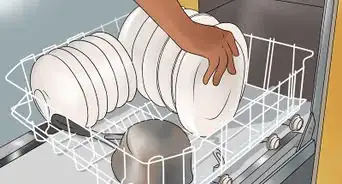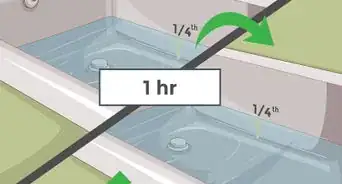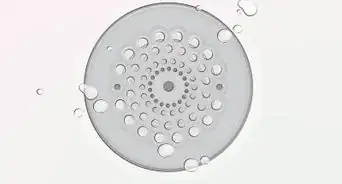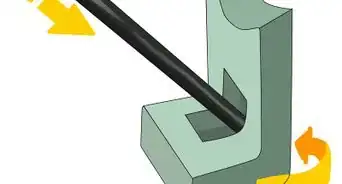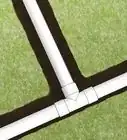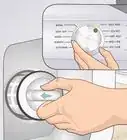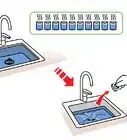This article was co-authored by David Balkan. David Balkan is a Professional Plumber, CEO of Balkan Sewer and Water Main Service, and President of Balkan Sewer and Drain Cleaning. As a hands-on owner of these companies for over 40 years, David is knowledgeable about water service lines, sewers, and drain line issues. David is a Committee Chairman of the Master Plumbers Council and has sat on the Executive Committee of the Sub Surface Plumbers Association of New York for over 30 years. His knowledge and solution-oriented approach contributed to Balkan Sewer and Water Main Service being the largest and most trusted service in New York City and the recipient of the 2017 Angie’s List Super Service Award.
This article has been viewed 93,394 times.
When mechanical methods fail, many people use chemical drain cleaners to unblock a clogged or slowly flowing drain. While these products are useful in both opening drains and removing buildup, they can be harmful if misused and can cause potential property damage. Knowing the proper way to use a drain cleaner is important.
Steps
Buying a Drain Cleaner
-
1Understand what drain cleaners do. Chemical drain cleaners or openers usually rely on a strong acid or alkali to do the job. These substances both break down and dissolve the clog, and react with the water to form heat.
- Drain cleaners work best on slow moving drains. They are less effective in clogs with standing water.
-
2Stick to using drain cleaners on the right kind of drain. Drain cleaners are not safe for use in toilets, tubs, garbage disposals, or in fixtures with a macerator or grinder pump.
- Drain cleaners are not recommended in houses with a septic system, as they can kill the bacteria inside the tank that help break down waste.
Advertisement -
3Pick what kind of drain cleaner you want to try. Most drain cleaners are either a concentrated "gel" or granulated crystals. There are also special types of drain cleaner for special jobs.
- Some products use a two part formula to generate a kind of "foaming" action. These are good for removing buildup, but should not be used in a completely blocked drain.
- Enzyme formulas exist, which attack the protein and fat bonds of clogs. These are safer and can be used on toilets and tubs, but are slower and less effective.
- Heavy-duty formulas usually contain 100% pure lye or sulfuric acid. These are effective but can be highly dangerous to the untrained.
Using a Drain Cleaner
-
1Follow the safety precautions. Drain cleaners are caustic and can cause harm to skin, eyes, and mucous membranes. When using a drain cleaner, wear safety goggles, rubber gloves that extend beyond the wrist, and a face mask or respirator if applicable.
-
2Use liquid drain cleaners like this:
- Open the bottle while grasping the handle. Do not splash or squeeze.
- Pour the specified amount into the drain.
- Allow up to 30 minutes for the clog to clear.
- Flush with plenty of hot water.
-
3Use these general steps for powder/crystal drain cleaners:
- Remove any standing water.
- Add 1-3 tablespoons of product into drain.
- Add one cup of cold water.
- Allow up to 30 minutes for clog to clear.
- Flush with cold water.
Warnings
- If drain cleaner is splashed onto eyes or skin, flush with water and contact a physician immediately.⧼thumbs_response⧽
- Clean up spills by sprinkling with absorbing material, then sweeping up and disposing.⧼thumbs_response⧽
- Never use a plunger or auger on a drain if drain cleaner has been used and did not work. Chemicals could be splashed up.⧼thumbs_response⧽
- Never mix drain cleaner with other household products.⧼thumbs_response⧽
